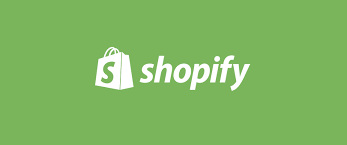Would You Say No To 90%+ Royalties? Maybe You Already Are.

D2C and 96% Royalties. Get Started Direct2Consumer With Shopify Lite.
Shopify just deposited £9.58 in my bank.
Nothing to get excited about on its own, but when you consider it was for a five-ebook package, each individually selling at £1.99 (GBP) on Amazon, it gets more interesting.
On Amazon those five (children’s) books would have cost the buyer £1.99 x 5 = £9.95. I sell them as a pack of five (not a box set – some people prefer individual titles because they are easier to navigate and to share among the children) for a clean £10.
On Amazon each sale would net me 35% of the £1.99 each, sixty days after the end of the month in which the sale was made. That’s 0.70 a shot x 5 making a total royalty for the five books of £3.50 coming to me. Amazon would have taken £6.50 for brokering the deal.
Instead Shopify landed £9.58 in my UK account just four working days after the transaction. (3 days for US and Australia, 7 days for Canada.) That’s £6.08 *more* than the same sale would have got me on Amazon.
And for those wondering, that’s a 96% royalty rate.
Even for a higher priced item where Amazon paid the 70% royalty (minus the delivery charge) that’s still upwards of 26% less than my direct sale delivered.
Shopify will also let me sell direct on Facebook and Pinterest. Not a promotional link to a retailer but a direct sales button.
And of course I can put sales buttons on my website, blog, etc.
There’s a monthly fee of $9 for Shopify Lite, which lets us do all the above.
The next step up is the Shopify store, which I plan on experimenting with in 2017. The monthly fee is a little higher, but when we’re collecting 95% of list price that’s no problem to cover if we have the traffic.
Where does the traffic come from? Our mailing lists are one good source. Plus of course we can directly promote our Shopify shop or individual sales links.
The downside of course is chart position on the mighty Amazon. Chart position equals visibility equals sales, as we all know.
But… If we are fielding niche-market titles (my bilinguals, for example), or have back-list titles that are not seeing much chart action anyway, D2C is a great way to maximise profits, and of course we have the customer data to up-sell further goods later.
And having a shop of course means we can bundle items as we like, cross-promote items as we like, and make up our own categories, and add links to retailers too. The latter is always good idea for ebooks because some buyers will want the convenience of, say, Amazon’s one-click.
With a shop (Shopify or whatever) we can also offer loyalty incentives. We can offer subscriptions. We can offer free bonus material. We can run promotions and competitions and special offers and etc, etc.
Yes, these are things we can do on our regular websites, but a well-branded “shop” adds appeal and professionalism for the consumer,.
And a shopping cart system where consumers can load up a basket of goods rather than make an individual purchase then go back and do it all over again.
D2C shouldn’t be seen as trying to compete with, or as an alternative to, the big retailers. But to compliment the sales they bring us, and to build our brand and enlarge out reach.
Shopify (LINK), like Etsy and Ecwid and Selz and etc will let us load digital content and will take care of everything for us once we have the listings live, so before we protest it’s all too much work it’s actually no different in that respect from loading to Amazon or Kobo.
The big difference is that 95% royalty.
What’s your excuse for not going D2C?
This post first appeared in the International Indie Author Facebook Group. (LINK)
◊ ◊ ◊

So many interesting auxiliary channels opening up these days. 🙂